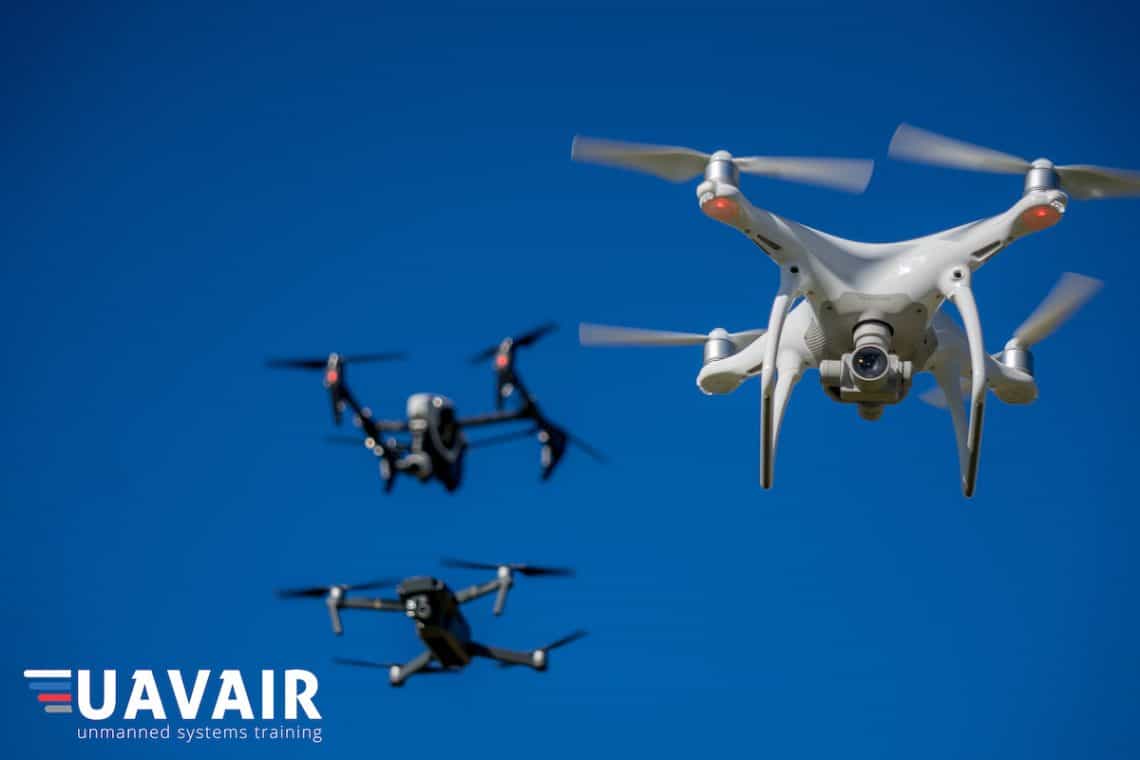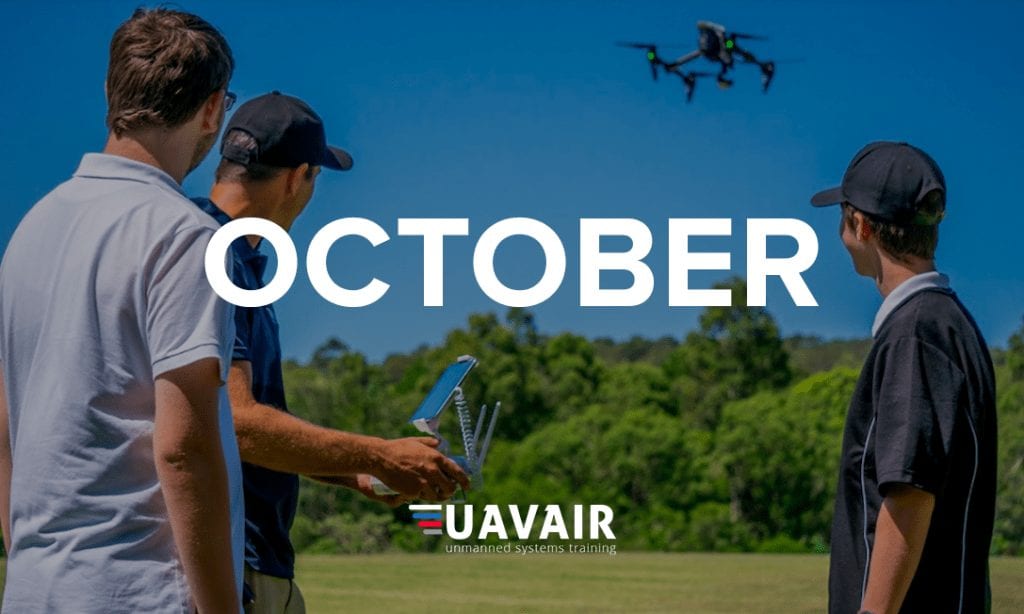It has been a fascinating month in the drone industry. US military use armed drones for assistance, Canadian communities to receive supplies via drones, Guzman Y Gomez tests a new drone delivery system and Spanish students use drones to learn.
Read on to find out more.
- The United States president Donald Trump has given permission for a Trump administration program to undergo further drone testing and further usage, this comes as the number of drones around the United States is expected to increase. The Remotely Piloted Aircraft Systems will begin to be tested for delivery of goods, collision prevention and their reliability and security.
However, communities in the United States may be at unease in regards to the usage of drones and their safety and privacy. Commercial usage drones in the United States are still prohibited without a license. The United States Federal Aviation Administration (FAA) has not yet released a framework or set of rules for the commercial use of drones.As a result, there are more licensed drone owners than those with aircraft licenses in the USA.
Read more at: https://www.cbsnews.com/news/domestic-drones-trump-approves-test-program-to-expand/ , http://scholarlycommons.law.northwestern.edu/cgi/viewcontent.cgi?article=1820&context=njilb - Chinese company DJI reveals a new technological device AeroScope that is able to track of an airborne drone.
AeroScope provides a radio inked connection to the drone and to the remote transmitting information including the drone’s serial number, measurements, location, altitude, speed and the flight direction. The AeroScope is compatible with all DJI drones and can be safely flown within a 5km radius.
Read more at:
http://www.dji.com/newsroom/news/dji-unveils-technology-to-identify-and-track-airborne-drones , https://www.engadget.com/2017/10/25/djis-scanner-can-nab-info-on-drones-mid-flight/ - Technological brand Parrot invents new drone the Bebop-Pro Thermal that has potential to assist society to survive. The Bebop-Pro Thermal is designed to take recordings, images, locate bad thermal insulation and interpret temperatures. It will potentially aid rescue services, architects, builders, roofers and real estate agencies for safety inspections when areas such as the roof are inaccessible or unsafe.
The drone is able to used in combination with the mobile app from the Google App store. The app is free and from there you are able to view HD visuals from the drone, switch between the thermal and visible camera and view stream recordings.
Read more at: http://money.cnn.com/2017/10/25/technology/parrot-bebop-pro-thermal-search-rescue-agriculture/index.html , https://www.parrot.com/global/parrot-professional/parrot-bebop-pro-thermal#parrot-bebop-pro-thermal-details - Aircraft manufacturing organisation Boeing will be purchasing Aurora Flight Sciences; another organisation that designs and manufactures unmanned aerial vehicles. Boeing’s chief coordinator technology officer and senior vice president of Boeing Engineering; Greg Hyslop, mentioned early in October that his expecting further technological advances with flight and artificial intelligence.
According to John Langford, founder and chief executive officer of Aurora, they will transition their products into ‘world-class products for the global infrastructure’. Aurora’s products include a robotic co-pilot and software that can sense landing strips.
Last April, Aurora also successfully launched and flew an air-taxi prototype.
Boeing and Aurora (using Boeing’s resources) will continue to advance their autonomous technologies and proceed further innovative ideas; possibly developing robot pilots and air taxis that will be safe to carry the general public in years to come.
Read more at: https://www.bloomberg.com/news/articles/2017-10-05/boeing-bets-on-robot-pilots-self-flying-taxis-with-acquisition , http://www.aurora.aero/wp-content/uploads/2017/10/APR348_-Aurora-Announcement_FINAL.pdf - In Northern Ontario, Canada, a community will begin to receive basic supplies via drones for a lower cost than previous methods. Companies Drone Delivery Canada and Moose Cree First Nation aim to assist northern Canadian communities by providing lower costing and more accessible basic supplies.
The costing of food in arctic northern Canada can be extremely costly due to the climate. There is heavy reliance for food in the summer considering the only way to retrieve it after the ice melts is via helicopter, hence the great cost.
In emergency, access to supplies can be difficult and may not be available.
Drone testing and training are beginning to be understaken by the two companies, providing Canada with job opportunities and further optimism for a difference.
Read more at: https://globalnews.ca/news/3785038/drone-delivery-ontario-remote-communities/


- Guzman Y Gomez Mexican fast food chain undergoes testing for an innovative new delivery system involving delivery of food via drones with Alphabet. Located in the ACT, Guzman Y Gomez has a Drone Mothership where they have begun launching drones and transporting fresh food to pre-selected samplers in rural Canberra.
The orders are sent to the Mothership via an app where the sampler can create an order. A specialised drone aircraft designed by Project Wings delivers the ordered food straight to the sampler’s backyard or door. The food is protected by a package specially designed by Project Wings and would remain fresh within the delivery process.
Although this new delivery method remains in the testing process, it potentially will be available to the public within a few months.
Read more at: https://blog.guzmanygomez.com/project-wing-drone-mothership/ - Caltech and NASA’s Jet Propulsion Lab (JPL) collate to develop further robotic technological devices such as a humanoid robot, advanced spacecraft and flying rescue drones. Research and work is being completed at the new Center for Autonomous System and Technologies (CAST) as of the opening in October 2017.
The team at CAST approximately consist of two dozen scientists from both Caltech and JPL.
CAST aim to allow their robotics to feature strong abilities that would potentially allow the robots to undertake not only difficult tasks on earth; but other planets and unfamiliar territory. Their humanoid robots ideally have the ability to withstand thousands of miles of walking.
Read more at: https://www.forbes.com/sites/alanohnsman/2017/10/24/caltech-teams-with-nasas-jet-propulsion-lab-to-build-the-next-generation-of-robots/#419857cb7648 - Armed drones will combat terror with the US military in Niger to prevent further soldier deaths. Earlier this October, four American and Nigerian servicemen died in combat after a surprise ambush attack that was carried out by the Islamic State (ISIS).
Trump Administration, after Niger government authorization, will obtain further precautions and use lethal force with drone strikes.
Read more at: http://www.newsweek.com/under-trump-us-military-working-toward-lethal-drone-strikes-against-isis-and-693498 - Students in Spain are being encouraged to learn about science, technology, engineering and maths by learning how to create their own drone.
The organisation BonaDrone in Vallbona d’Anoia, Spain are developing DIY drones that enable students to make their drone from scratch from their kits using 3D Printing technology. BonaDrone desire to motivate new generations to pursue engineering, coding and robotics by exposing them to such exciting tools and resources that are often lacked in schools.
Students will have the ability to gain easy access, assemble and configure their own drone whilst still being about to ‘fit their education needs’. The usage and creation of drones not only supports the education for Mechanics, Electronics, Physics, Technology, Computer Programming, Multimedia Projects – it also will enhance the student’s imagination as they learn to personalise their drone using emerging technologies.
Read more at: https://www.ft.com/content/08cde1f4-8751-11e7-8bb1-5ba57d47eff7 , https://www.bonadrone.com/en/education - A new Russian solar-powered drone LA-252 Aist is the process of testing. The LA-252 Aist has the ability of flying for many days through clouds with the reliance on solar energy. The large glider-like drone can function as a Wi-Fi transmitter, communication device and as a repeater. At nighttime, the drone continues to fly with batteries that are recharged in the daylight.
The developers of the drone,the Lavochkin Research and Production Association; will pursue further testing. The drone may have the capacity to function in acquisition with space satellites.
Read more at: http://www.dailymail.co.uk/sciencetech/article-5015697/Russia-tests-solar-powered-drones-fly-DAYS.html
